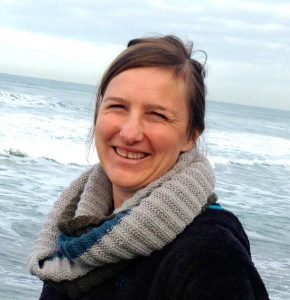Buried alive? How sediments shut down faults in the Gulf of Alaska
The interplay of tectonic and surface processes drives many societally relevant processes from seismic hazard at subduction zones to the construction of Earth’s largest mountains. The St. Elias Mountains in southern Alaska are the world’s highest coastal range, host the world’s two largest temperate glaciers and experience the highest recorded offshore sediment accumulation rates globally. Combined with high uplift rates and proximity to one the of the world’s most seismically active margins, the area provides a superb setting for evaluating competing influences of tectonic and surface processes on mountain-building. Before Integrated Ocean Drilling Program Expedition 341 in 2013, studies were limited by the absence of information on the time-dependent behavior of glaciers and faults. High precision age constraints from drilling show how fault activity across the offshore St. Elias Mountains varies through space and time. Following an order-of-magnitude increase in sediment accumulation rates at the Mid-Pleistocene Transition, when northern hemisphere glaciation transitioned to 100,000 year cycles, previously active faults within the primary glacial depocenters shut down. Core-derived geotechnical analysis of the extent of sediment dewatering shows that the high accumulation rates, along with the increased sediment load, may control the suppression of faulting. This talk will also highlight future opportunities for investigating climate-tectonic interactions along the eastern North Pacific margin via ocean drilling.
Dr. Worthington is an assistant professor at the University of New Mexico. She uses seismology and geophysics to study Earth structure, mountain-building, glacial dynamics and plate boundary fault processes.
LECTURE SCHEDULE
November 15, 2019 – University of Delaware; Newark, DE
January 31, 2020 – University of Texas, Austin; Austin, TX
February 24, 2020- Utah State University; Logan, UT
February 6, 2020 – University of Washington; Seattle, WA
February 20, 2020 – University of Alaska Anchorage; Anchorage, AK
February 28, 2020 – West Virginia University; Morgantown, VA







